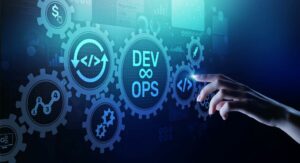Modern DevOps teams may also include other stakeholders — such as quality assurance engineers or security specialists — who can bring additional expertise to the software delivery process. Continuous improvement was established as a staple of agile practices, as well as lean manufacturing and Improvement Kata. It’s the practice of focusing on experimentation, minimizing waste, and optimizing for speed, cost, and ease of delivery.
- In a traditional waterfall software development environment, different teams are assigned different tasks.
- This approach improves velocity, productivity, and sustainability of software development teams.
- Here, ops acts as an internal consultant to create scalable web services and cloud compute capacity, a sort of mini-web services provider.
- Knowing the ins and outs of configuration management is a plus as well.
DORA’s research has found reliability unlocks the effect of software delivery performance on organizational outcomes. A platform team acts like an enabling team that packages the knowledge into a self-service offering. Stream-aligned teams can use the products created by platform teams to simplify and accelerate their work. You can revisit your understanding of these DevOps team structures using Team Topologies. This model recognizes that communication within a team is high-bandwidth. How closely aligned two teams are can affect the speed that information moves between them.
Resources
This helps DevOps teams address bugs quicker, improve software quality, and reduce the time it takes to validate and release new software updates. Continuous integration (CI) allows multiple developers to contribute to a single shared repository. When code changes are merged, automated tests are run to ensure correctness before integration. Merging and testing code often help development teams gain reassurance in the quality and predictability of code once deployed. DevOps teams use tools to automate and accelerate processes, which helps to increase reliability. A DevOps toolchain helps teams tackle important DevOps fundamentals including continuous integration, continuous delivery, automation, and collaboration.

Choosing the right agile tools, educating stakeholders and assigning them specific roles, and collaborating with everyone using Kanban/Scrum boards is recommended. As DevOps is neither a technology nor a tool, hiring the right DevOps human resources is a challenging task. Instead of getting caught in the buzzword, it is important to look at organization-specific needs first. Create a hiring strategy based on industry trends, technological analysis, and business requirements.
Navigating DevOps Support Tools: A Comprehensive Overview
While this architecture offered stability, any changes to the application impacted the application as a whole. DevOps teams are ideally led by a senior member of the organization who knows business processes, has the technical expertise, and interacts with all employees. The leader should have a clear vision and articulate the vision across the team, drive intent, inspire, motivate and encourage everyone.

Using the right chat tools and communication tools is recommended. Alert escalation and incident management tools play a handy role in helping members receive timely alerts and keep themselves updated with what’s happening across the infrastructure. Dev and Ops Collaboration is one of the most common team structures and best practices in DevOps. The key here is to ensure fast and effective collaboration between Dev- and Ops-teams. Depending on your needs, you can switch between using only one specialized team or using two teams together. This approach also accommodates having several separate Dev-teams that can work in parallel on partially independent products.
Support for Server products ends February 15, 2024
Teams that practice DevOps release deliverables more frequently, with higher quality and stability. In fact, the DORA 2019 State of DevOps report found that elite teams deploy 208 times more frequently and 106 times faster than low-performing teams. Continuous delivery allows teams to build, test, and deliver software with automated tools. This includes the practices involved in design, implementation, configuration, deployment, and maintenance of all IT infrastructure that supports an organization’s services. Smart hiring tactics establish the right DevOps team structure, as well as an understanding of everyone’s roles. Place a high value on learning and collaboration, beyond simply designating teams, and this shrewd composition of skills can start a revolution in how IT works.
These pathways don’t prevent teams from using something else but offer supported self-service products that help teams improve delivery capability. The remedy was DevOps, which bridges the gap between these teams so they work cohesively. DevOps brings together the skills, processes, and tools together from both development and operations teams. The foundation of DevOps is a culture of collaboration between developers and operations teams, who share responsibilities and combine work. This makes teams more efficient and saves time related to work handoffs and creating code that is designed for the environment where it runs. A DevOps team includes developers and IT operations working collaboratively throughout the product lifecycle, in order to increase the speed and quality of software deployment.
Continuous learning
Constantly reevaluate what’s working, what’s not, and how to deliver most effectively what your customers need. Their work is a must-read for anyone who’s trying to figure out which DevOps structure is best for their company. The right DevOps team will serve as the backbone of the entire effort and will model what success looks like to the rest of the organization.

With automation the simple act of pushing code changes to a source code repository can trigger a build, test, and deployment process that significantly reduces the time these steps take. Continuous integration is the practice of automating the integration of code changes into a software project. It allows developers to frequently merge code changes into a central repository where builds and tests are executed.
How to build a winning DevOps organization structure
Because stream-aligned teams work on the full spectrum of delivery, they are, by necessity, closer to the customer and usually already agile. This team incorporates customer feedback in development cycles, while maintaining software in production. In some ways, the work performed by QA engineers might seem at odds with other DevOps goals.
In this scenario, dev and DevOps are melded together while ops remains siloed. Organizations like this still see ops as something that supports the initiatives for software development, not something with value in itself. Organizations like this suffer from basic operational mistakes and could be much more successful if they understand the value ops brings to the table. They empower DevOps practices by helping to improve collaboration, reduce context-switching, introduce automation, and enable observability and monitoring.
Security engineers
This means that Ops specialists should feel comfortable working closely with Dev counterparts on issues related to development. Whereas Dev teams should also have a clear understanding of the needs and challenges of the operational teams, mainly those related to deployment. DevOps practices come and go as they are put to a test against real-life scenarios. Some prove to be viable, others just don’t bring the results we expect. In this post, we’ll take a closer look at the most popular and effective DevOps team structure best practices, so that you can better understand what’s working or not. The goal of this team is to reduce the load of stream-aligned teams who work on systems that include or use the subsystem.
There is no “one size fits all” however – each team will be different depending on needs and resources. Bookmark these resources to learn about types of DevOps teams, or for ongoing updates about DevOps at Atlassian. In our DevOps Trends survey, we found that more than two-thirds of surveyed organizations have a team or individual that carries the title “DevOps” in some capacity. You need to customize your DevOps strategies looking at the cues offered by early adopters to fully leverage its benefits. The main goal of the team is to deliver higher performance, quickly recover from outages and fail less.
Be sure to check out our DevOps tutorials for automation, testing, security, observability, feature flagging, and continuous delivery. Continuous delivery expands upon continuous integration by automatically deploying code changes to a testing/production environment. It follows a continuous delivery pipeline, devops organization where automated builds, tests, and deployments are orchestrated as one release workflow. Teams entrenched in siloed ways of working can struggle with, or even be resistant to, overhauling team structures to embrace DevOps practices. Some teams may mistakenly believe new tools are sufficient to adopt DevOps.
